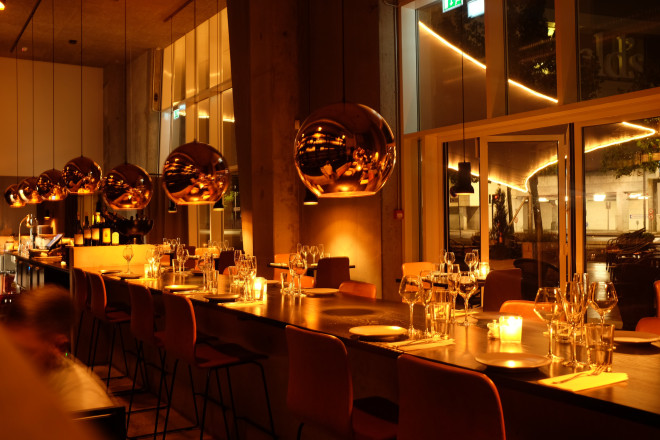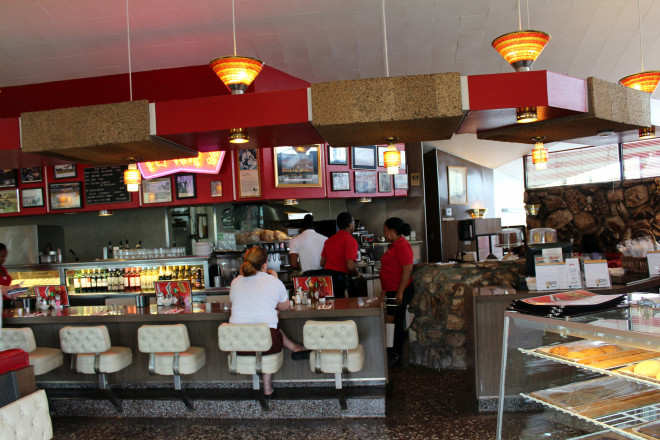How Much Does It Cost to Build a Restaurant
5 Things Startup Restaurants Typically Overspend On

A few high-impact elements deliver a big bang for the buck.
Starting a restaurant is an ambitious undertaking. Many startup restaurants begin with a dream, one that consists of crafting a fabulous menu served inside a restaurant with gorgeous décor and an inviting atmosphere.
That dream should be tempered with a bit of reality, too, as the restaurant business is one of the toughest industries. Your end goal, besides serving delectable food, is to make money, so you'll have to avoid overspending to make your dream a reality.
Yet, many startups spend too much money from the outset. We're going to discuss five things startup restaurants typically overspend on, but first let's take a look at average startup costs.
Average restaurant startup costs vary from a few thousand to a few million. According to a survey, the median cost to open a restaurant is $275,000 or $3,046 per seat. If owning the building is figured into the amount, the median cost is $425,000 or $3,734 per seat. Most survey respondents estimated these median costs were 15% above their projected budget.
So, before we even start discussing the ways startups overspend, we can see overspending is a wide-reaching and very common problem.
Before you think you have to spend millions on your new startup, let's discuss some things startup restaurants typically overspend on along with some ways to keep control of your budget.
#1: New Equipment Costs
Outfitting the kitchen and buying equipment may very well be one of the biggest ways startup restaurants typically overspend.
Startups should be careful not to overspend when purchasing equipment. Look at second-hand options, shop online and buy only what you need now. Another restaurant's failure may be fortunate for you. Look for these as you might find equipment at greatly reduced prices.
It is incredibly important to have the right equipment on hand, especially in the kitchen, and restaurant equipment financing may be another answer to getting the professional equipment a startup needs without overspending.
An experienced, reputable financing company works with restaurant startups to make a plan. The best companies can provide everything a startup needs from kitchen to dining room. The bonus for you is you'll know your monthly costs, and you can work with the company to set a doable payment that won't break the budget.
#2: Technology
Technology is everywhere, and we can't live without it. But, does your startup really need it all? Too much high-tech can be bad for your restaurant's financial health.
Prioritize the most important items on your list. You need a bookkeeping system to keep costs in check, and you need a point of sale system. Those are essential technology items.
Do the members of your wait staff all need iPads for order taking? Probably not, especially if you are trying not to overspend.
While technology in restaurants is on the rise, it's ultimately up to you to decide how much you'll spend, and overspend, on it.
If your business model dictates iPads table-side for ordering and payment options, research prices. Perhaps your restaurant doesn't need the newest model; you might be able to make the last generation work. Be sure and negotiate for the best prices. Check out your entire Wi-Fi price options; don't just settle on the first salesman who comes knocking.
Again, we emphasize the need for a budget and sticking to it so as not to overspend on your technology budget.
#3: Sales and Marketing
It's incredibly easy for startups to overspend in the area of sales and marketing, especially if marketing isn't something they know a lot about. (tweet this)
Either the restaurant owner gets talked into an agency contract because they don't know enough about marketing, or instead of using other low-cost marketing methods, startups tend to rush out and hire expensive advertising agencies or sales teams. Startups expect these ad agency teams to launch big, splashy ad campaigns, often before any market research is done.
Lots of startups get excited if they score some venture capital cash. They think it's time to spend-spend-spend, and advertising seems a viable place. Not so good if a short while down the road the startup has a major repair bill.
The restaurant startup does need to market their new restaurant. So, how does a startup handle marketing without overspending?
- Leverage the Internet.
- Sign up for social media sites.
- Place low-cost Facebook and Twitter ads; consider advertising on other social media sites.
- Start a conversation using your website's blog and social media.
- Hand out flyers at local businesses. Network, network, network to encourage referrals.
While TV advertising is still a viable source, it isn't necessarily one you need to start with, especially if you want to avoid overspending. An eMarketer study shows that 70% of respondents feel TV is influential for a brand, while social media follows quickly behind with 60% finding it influential. The next three most valuable sources according to the survey are online display, online video and mobile.

Make a contingency plan to help budget for unexpected expenses.
#4: Remodeling / Decorating
Decorating the dining room is a costly expense whether a startup is just decorating or remodeling an area. These expenses add up quickly, cutting into the already tight startup budget.
Decide what's most important. Is it that $2,000 chandelier or the art deco paintings? Try and stay away from major expenses like moving walls.
In the rush to have everything perfect, startups often forget that choosing a few high-impact elements can deliver a big bang for the buck. Startups can create a terrific atmosphere with paint colors, finishes, nice lighting, some inexpensive landscaping and unique upholstery options.
Startups would do well to remember their average meal price and spend accordingly on decorating. The trick is to make dramatic statements without overspending. Search sites like Pinterest for decorating ideas on a budget.
Don't forget to budget for the unexpected when decorating and remodeling. When your contractor discovers a leak in the ladies room, you won't overspend if you've already got a built-in contingency. Don't let unexpected costs take you by surprise.
#5: Food Expenses
For many startups, reeling in costs is vital to success. (tweet this) Yet, many startups overspend on food expenses and poor menu choices. It can be hard not to overbuy, but there is a way to manage food budgets for startups.
To begin, don't be talked into an expensive, fancy food vendor. Reach out to local farmers and co-ops. Establish relationships with several suppliers, and work with them to lock-in prices.
Evaluate your menu. Consider reducing the amount of offerings to streamline purchasing and preparation.
Identify areas of waste. Pay attention to how much food comes back to the kitchen and re-examine your portion sizes. Reducing the portion size yet leaving the cost the same raises your profit margins.
Lastly, weigh everything and don't overbuy. That fresh lettuce you bought at the farmer's market won't last all week. Throwing it away adds to your overspending and increases the likelihood you'll break your budget.
In Conclusion
It's important to remember that while startup restaurants have a multitude of expenses, it is crucial to keep some capital in reserve to put towards unexpected expenses. Poor budgeting and a lack of planning have resulted in the failure of many restaurants. As long as you create a budget and stick to it, and you keep some money in reserve, you'll be able to handle the unanticipated items that crop up with ease.
Tell us how you handled your restaurant's startup budget. Did you have troubles with overspending? How did you handle them? Or, did you manage to stick to your budget and keep spending in check? We'd love to hear your comments and tips for future restaurant startup owners. Post below!
Images: Kristoffer Trolle and Wally Gobetz
Related posts:
How Much Does It Cost to Build a Restaurant
Source: https://restaurantengine.com/startup-restaurants-typically-overspend/